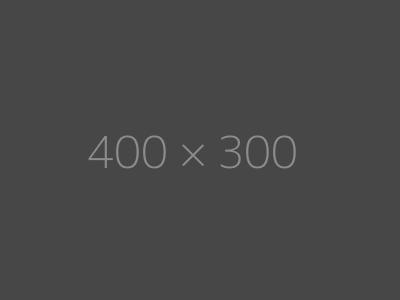Fast Track Your Replacement Nebraska Driver’s License Tips

If you’re a Nebraska resident who’s lost or had your driver’s license stolen, you’ll want to get a replacement as soon as possible. Luckily, there are ways to fast track the process and minimize downtime. By understanding the eligibility requirements, necessary documents, and fees involved, you’ll be well on your way to getting back on the road quickly. But what if you’re short on time and need your replacement license today? There are expedited options available, but do you know how to take advantage of them?
Eligibility for Replacement License
Nebraska residents often find themselves in situations where they need a replacement driver’s license. If your license is lost, stolen, or damaged, you’ll need to apply for a replacement as soon as possible.
You’re eligible for a replacement license if you’re a Nebraska resident and your license isn’t expired or suspended.
If you’re a non-US citizen, you’ll need to provide proof of your lawful presence in the US. Your replacement license will have the same expiration date as your original license.
You’ll need to report the loss or theft of your license to the police if you’re a victim of identity theft.
You can apply for a replacement license online, by mail, or in person at your local Department of Motor Vehicles (DMV) office. You’ll need to provide the required information and follow the application process.
If you’re applying in person, it’s best to make an appointment to avoid waiting in line. Check the DMV’s website for the most up-to-date in club21ids mation on replacement licenses and application requirements.
Required Documents and Fees
When applying for a replacement driver’s license, you’ll need to gather specific documents and pay the required fees.
You’ll need to provide proof of identity, Social Security number, and Nebraska residency. Acceptable documents for proof of identity include a U.S. birth certificate, a valid passport, or a Certificate of Naturalization.
For proof of Social Security number, you can use your Social Security card, W-2 form, or 1099 form.
To prove Nebraska residency, you’ll need to provide two documents, such as a utility bill, lease agreement, or bank statement, that show your name and Nebraska address.
The required fee for a replacement driver’s license in Nebraska is $26.50 for a standard license.
If you want a REAL ID-compliant license, the fee is $26.50 plus a $5 REAL ID fee.
You can pay with cash, check, or credit card.
You may also need to pay an additional fee if you need to update your address or name on your license.
Make sure to check with the Nebraska Department of Motor Vehicles (DMV) for any updates on fees and required documents.
Applying for a Replacement
Applying for a Replacement
You’ve gathered the required documents and paid the fees, now it’s time to submit your application. Visit a Nebraska Department of Motor Vehicles (DMV) office near you. Make sure to check the office hours and location before heading out.
| DMV Office Options | What to Expect | Additional Tips |
|---|---|---|
| In-Person | Meet with a representative, submit your application, and have your photo taken. | Be prepared to answer questions and provide additional documentation if needed. |
| Drop Box | Place your application and supporting documents in a sealed envelope, and deposit it in the drop box. | Use a secure envelope to protect your documents, and include a check or money order for the fee. |
| Send your application and supporting documents to the DMV address listed on the form. | Use certified mail with return receipt to track your application and ensure it’s received. |
After submitting your application, review it carefully to ensure everything is accurate. If you’re applying in person, the DMV representative will review it with you. Once your application is processed, your replacement driver’s license will be mailed to you.
Replacing a Lost License Online
If your driver’s license has gone missing, you can now breathe a sigh of relief – the Nebraska DMV has made it easier to replace a lost license online.
To start the process, you’ll need to visit the Nebraska DMV’s website and click on the “Replace a Lost or Stolen Driver License or ID Card” link. You’ll then be prompted to log in to your account or create a new one if you don’t already have one.
Once you’re logged in, you’ll need to fill out the online application form, which will ask for your personal and license information.
Make sure to have your Social Security number and driver’s license number handy, as you’ll need to provide this information to verify your identity.
After submitting your application, you’ll need to pay the replacement fee using a credit or debit card.
The fee is currently $26 for a standard replacement license.
Once your payment is processed, your new license will be mailed to you within 20 business days.
Be sure to review your application carefully before submitting to avoid any delays in the process.
Expedited Replacement Options
You’ve successfully started the process of replacing your lost driver’s license online, but what if you need your new license sooner than the standard 20 business days?
Nebraska’s Department of Motor Vehicles (DMV) offers expedited replacement options for an additional fee. If you’re in a hurry, you can opt for a rush order, which guarantees processing within 2 business days.
To take advantage of this option, you’ll need to pay an extra fee, which you can do online or by mail.
Another option is to visit a DMV office in person.
This will ensure you get your replacement license on the same day, provided you have all the required documents and pass the necessary background checks.
Keep in mind that not all DMV offices offer same-day service, so it’s best to call ahead to confirm.
Additionally, you may need to provide proof of identity and residency, so be sure to bring the necessary documents with you.
Conclusion
By following these steps, you can fast track your replacement Nebraska driver’s license. Make sure you’re eligible, gather the required documents and fees, and choose the best application method for your situation. If you need your license quickly, consider expedited options like rush orders or in-person visits to a DMV office. These options can get you back on the road in no time, saving you time and hassle in the process.










